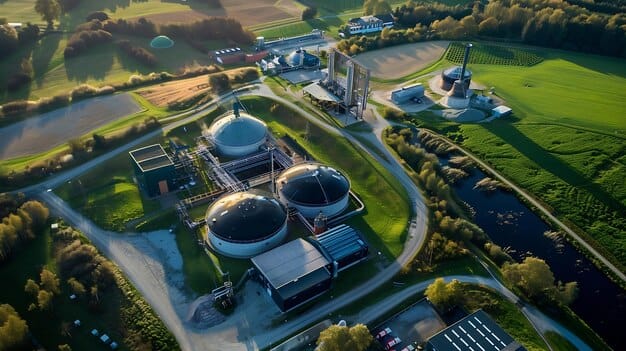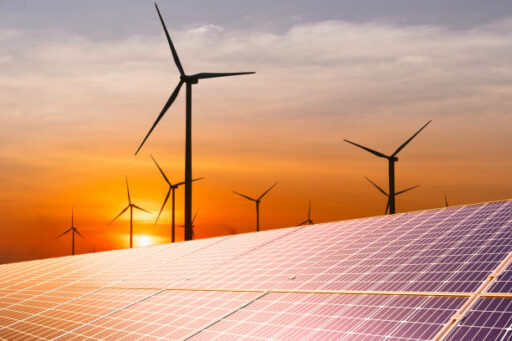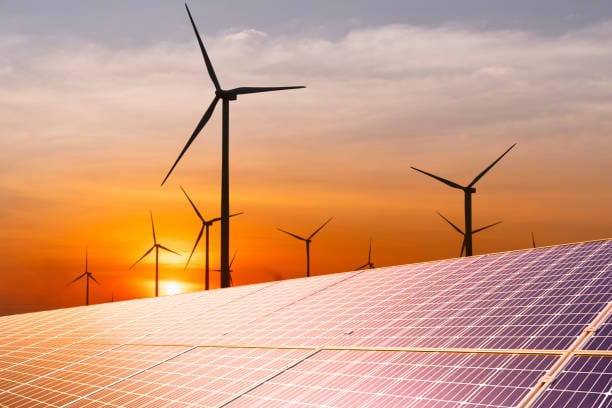When we talk about climate change it stands as one the most urgent issue to resolve ASAP. This is mostly caused by the buildup of green house gases in the atmosphere as result of human activity. The major source of these emissions is burning of fossil fuels for energy, which is causes global warming. Now it’s time think about how to shift towards renewable energy sources by mitigating the consequences and awareness of sustainable future in whole world. We’ll try to explore by deep diving to examine different renewable sources with their significance of supportive policies, human acts, advantages and adoption barriers. So let’s start to dig the findings of the role of renewable energy in addressing climate change.
Understanding The Role of Renewable Energy Sources
Renewable energy is forms of energy that are derived from natural resources that are replenished constantly. The main renewable energy sources are:
- Solar Energy: This is production of electrical energy directly from sunlight using photovoltaic cells, or through heating collection systems.
- Wind Energy: This is the use of wind turbines to convert the kinetic energy of wind into electrical energy.
- Hydropower: This is production of electricity from the energy of moving water, either through the use of dams or through the use of run-of-the-river systems.
- Geothermal Energy: This is the process of using the heat from the earth to produce electricity or for direct heating.
- Biomass Energy: This is the production of energy from the burning of organic materials such as wood, agricultural residues and waste.
Each of these sources has special benefits and may be used in different ways to satisfy energy needs in a sustainable way.
Comparing The Role of Renewable Energy to Fossil Fuels
A key factor in lowering greenhouse gas emissions is the transition from fossil fuels to renewable energy. Here is a comparison showing the main distinctions:
| Aspect | Fossil Fuels | Renewable Energy |
|---|---|---|
| Carbon Emissions | High emissions contributing to climate change | Minimal to zero emissions during operation |
| Resource Availability | Finite resources leading to eventual depletion | Inexhaustible sources like sun, wind, and water |
| Environmental Impact | Significant pollution and habitat disruption | Lower environmental footprint; some concerns with land use and wildlife |
| Economic Factors | Subject to market volatility and geopolitical tensions | Increasingly cost-competitive; stable energy prices |
| Energy Security | Dependence on imports can lead to vulnerabilities | Promotes energy independence and local job creation |
Changing to renewable energy not only solves environmental issues but also provides benefits related to energy security and economy.
Economic Benefits and Job Creation
Putting money into renewable energy promotes employment and economic development. The renewable industry has created numerous job possibilities in a variety of areas, including manufacture, installation, maintenance, and research. For example, the solar and wind sectors have expanded rapidly, resulting in increasing need for trained people. Furthermore, renewable energy projects frequently engage local communities, which promotes economic growth and resiliency. As worldwide demand for sustainable energy grows, so does the potential for job development and economic gains.

Environmental Benefits and Air Pollution Reduction
Renewable energy sources provide major environmental benefits over fossil fuels. Renewables provide power without using fossil fuels, resulting in little to no greenhouse gas emissions and thereby mitigating climate change. Furthermore, decreasing reliance on fossil fuels reduces air pollution, resulting in better public health outcomes. Cleaner air leads to fewer respiratory and cardiovascular health disorders, which reduces healthcare expenditures and improves quality of life. Furthermore, renewable energy initiatives may help with resource conservation by reducing water use and maintaining natural ecosystems.
Challenges in Adoption: High Initial Costs and Energy Storage Solutions
Despite the various advantages, the use of renewable energy confronts obstacles. High initial capital expenditures for infrastructure development can be prohibitive, particularly in underdeveloped countries. However, technical breakthroughs and economies of scale are helping to reduce costs, making renewables more accessible. Energy storage is another major concern, as the intermittent nature of sources such as solar and wind necessitates effective storage systems to provide a consistent supply. Innovations in battery technology and other storage systems are critical for addressing this issue and integrating renewables into the electricity grid.
Policy Support and Global Adoption for The Role of Renewable Energy
Government policies have an important role in increasing the uptake of renewable energy. Subsidies, tax breaks, and renewable energy standards all help to promote investment and growth. Many nations have set aggressive objectives to increase the amount of renewables in their energy mix, demonstrating their commitment to tackling climate change. International collaboration and information exchange accelerate the worldwide transition to sustainable energy systems.
Individual Actions and Community Engagement
Individuals have a crucial role in promoting renewable energy. Adopting energy-efficient behaviors, supporting renewable energy programs, and pushing for sustainable regulations all add to the overall endeavor. Community-based renewable energy initiatives benefit local communities by increasing access to clean energy and encouraging environmental care. Individual and community action complements legislative initiatives and speeds up the transition to a sustainable energy future.

Case Study: Denmark’s Wind Energy Revolution
Denmark illustrates effective integration of renewable energy into a national framework. The government has made major investments in wind energy, which now accounts for a large share of its electrical output. This success is due to supporting government policy, popular acceptance, and ongoing technology progress. Denmark’s experience indicates how strategic preparation and determination may result in significant progress in renewable energy adoption, acting as a model for other countries seeking to address climate change.
FAQs
1. How does renewable energy help combat climate change?
Renewable energy sources including solar, wind, and hydropower provide electricity without releasing greenhouse gases. By replacing fossil fuels with renewable energy, we can drastically cut carbon dioxide emissions, which are the major cause of global warming.
2. What are the main types of renewable energy?
The primary types of renewable energy include:
- Biomass Energy: Producing energy by burning organic materials or converting them into biofuels.
- Solar Energy: Capturing sunlight to produce electricity or heat.
- Wind Energy: Using wind turbines to convert wind into electrical power.
- Hydropower: Generating electricity through the energy of moving water.
- Geothermal Energy: Utilizing Earth’s internal heat for power generation or heating.
3. What are the economic benefits of adopting renewable energy?
Investing in renewable energy generates job opportunities in the manufacturing, installation, and maintenance industries. It also fosters energy independence, keeps energy costs stable, and can spur technical innovation, all of which contribute to overall economic growth.
4. What challenges are associated with the adoption of renewable energy?
Challenges include high initial capital costs, intermittency concerns (for example, solar and wind fluctuation), the need for sophisticated energy storage options, and the need to modernize current grid infrastructures to accommodate renewable sources.
5. How can individuals contribute to the transition to renewable energy?
By embracing these actions, individuals play a crucial role in reducing reliance on fossil fuels and mitigating climate change. Individuals can support the shift by:
- Reducing personal energy consumption through efficiency measures.
- Installing solar panels on their properties.
- Choosing energy providers that supply renewable energy.
- Advocating for policies that promote clean energy.
Conclusion for The Role of Renewable Energy
Renewable energy plays an absolutely critical part in mitigating climate change. Transitioning to renewable energy sources lowers greenhouse gas emissions, increases energy security, and provides economic and environmental advantages. While problems exist, they may be overcome via technical innovation, supporting legislation, and collaborative effort. Embracing renewable energy is not just a choice; it is required to ensure our planet’s long-term viability and resilience.








